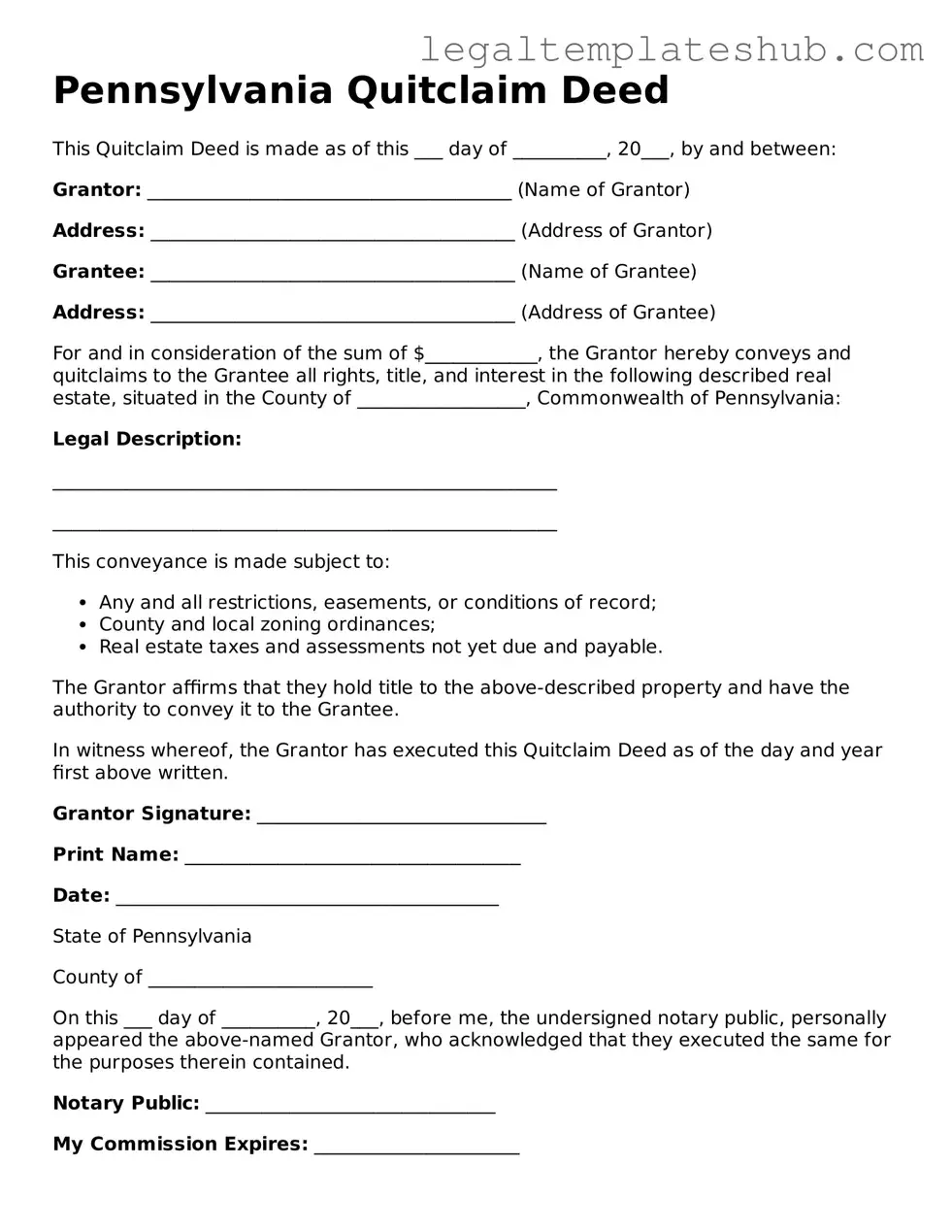Printable Quitclaim Deed Document for Pennsylvania
A Quitclaim Deed is a legal document that allows one party to transfer their interest in a property to another party without making any warranties about the title. This form is often used in situations where the parties know each other, such as in family transfers or divorce settlements. Understanding how to properly fill out and file this form is essential for ensuring a smooth property transfer process.
Ready to get started? Fill out the form by clicking the button below.
Access Editor
